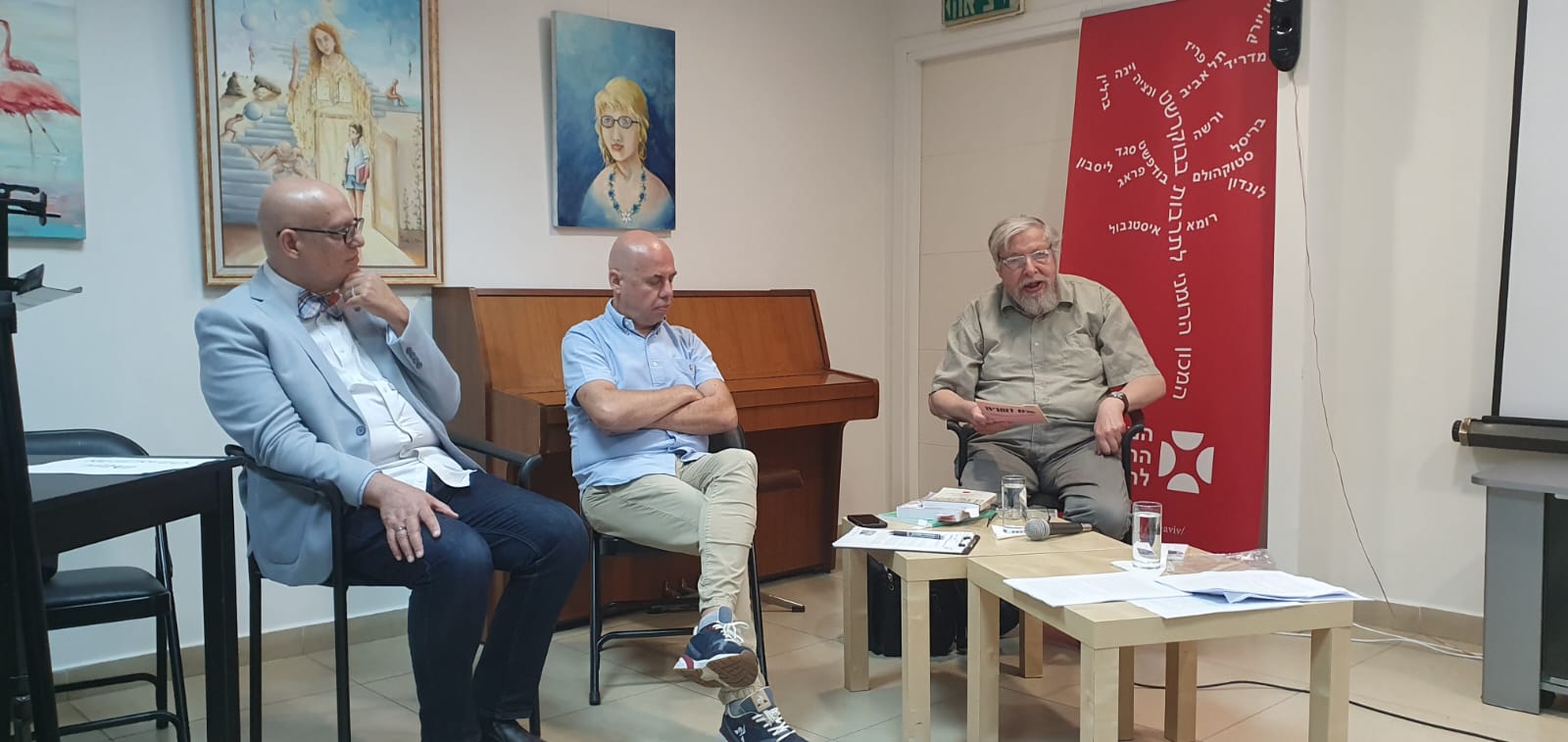
In order to celebrate Romanian Language Day - one of the most important events in the diplomacy of culture, designed to highlight the diversity and spiritual wealth of various Romanian-speaking communities in the world - the Romanian Institute of Culture from Tel Aviv organized and hosting an event dedicated to the personality and work of the writer Panait Istrati, described by Marin Sorescu as "the first Solzhenitsyn in European literature".
This event took place at the institute, in Romanian and Hebrew, on Monday, September 2
The event was attended by
- The Israeli journalist Benny Ziper, who will talk about his research that he did at the "Panait Istrati" house in the city of Raila - a museum that preserves manuscripts, books with a dedication, rare editions, first editions, documentary photos - documentary
- The Israeli journalist Benny Ziper, who will talk about his research that he did at the "Panait Istrati" house in the city of Raila - a museum that preserves manuscripts, books with a dedication, rare editions, first editions, documentary photos - documentary
material intended for the study of the life and work of Panait Istrati;
- Zamfir Blanc, curator of the "Panait Istrati" museum and deputy director of the city museum in Raila, with a lecture and video on "Panait Istrati and the Jewish world in his time";
- Lucian-Zev Hershkowitz, historian and librarian at the National Library of Israel, with a lecture on "Jewish Aspects in the Panait Istrati Writings".
- Zamfir Blanc, curator of the "Panait Istrati" museum and deputy director of the city museum in Raila, with a lecture and video on "Panait Istrati and the Jewish world in his time";
- Lucian-Zev Hershkowitz, historian and librarian at the National Library of Israel, with a lecture on "Jewish Aspects in the Panait Istrati Writings".
The work of Panait Istrati (1884-1935), written in French and Romanian, has been translated into more than 30 other languages.
In the stories and novels he wrote, he describes the world of the proletariat, whom he knew closely in his city of Braila and in the Danube Delta, where he met a mixture of peoples and religions, as well as in the various cities of Europe he passed through during his life. Among the subjects ,the favorites in his literary work are due to the fascination for the East, which for Istrati was a source of general knowledge and self-knowledge, of liberation and of light. Likewise, wandering and nomadism are also important themes in Istrati's work, since the concept of wandering fits his extroverted, hasty and excited nature. Among his most famous works are "Kira Kirlina", "The Deer of Baragan Field", "Kudin", "The Old Englishman", "Sunrise", "Confession for the Defeated".
"Fanait Istrati was discovered by the French author Romain Rollin in the early 1920s - of the last century.
"Fanait Istrati was discovered by the French author Romain Rollin in the early 1920s - of the last century.
Panait Istrati quickly became one of the most famous writers in the world. Except for a few cases, he wrote his work in French, but kept the atmosphere, thought and features of the Romanian language. Later, he rewrote a large part of his work in his native language.
"He is the writer whose work is marked by love of man and love of freedom - the only human asset for which one must sacrifice everything: money, glory, health, life, and even his personal freedom" - wrote Zamfir Blanc, curator of the "Fanait Istrati" treasure and deputy director of the city museum in Raila.
The Romanian Institute of Culture in Tel Aviv is pleased also to present the exhibition of paintings
"Surrealism, Music and Flowers" by the Romanian-born Israeli artist Paul Simo.
The official opening took place on Thursday July 25 at 18:00 in the presence of the artist and distinguished guests.
Paul Simo is a native of Capilinita (Hergita district) who graduated from the Bard School of Popular Art, Romania. After immigrating to Israel in 1989, he continued to work in the field of art and decorative painting. Paul is an active member of the Netanya Artists Association who exhibited in solo and group exhibitions in Israel and abroad including Romania, Hungary, China, South Korea and the USA and won prestigious awards
The exhibition is open until
24.09.2024
Entry is free but you need to book in advance
For more information and to register for a visit
Tel.: +972-3-696 17 46,
Photo courtesy of The Romanian Institute of Culture in Tel Aviv








